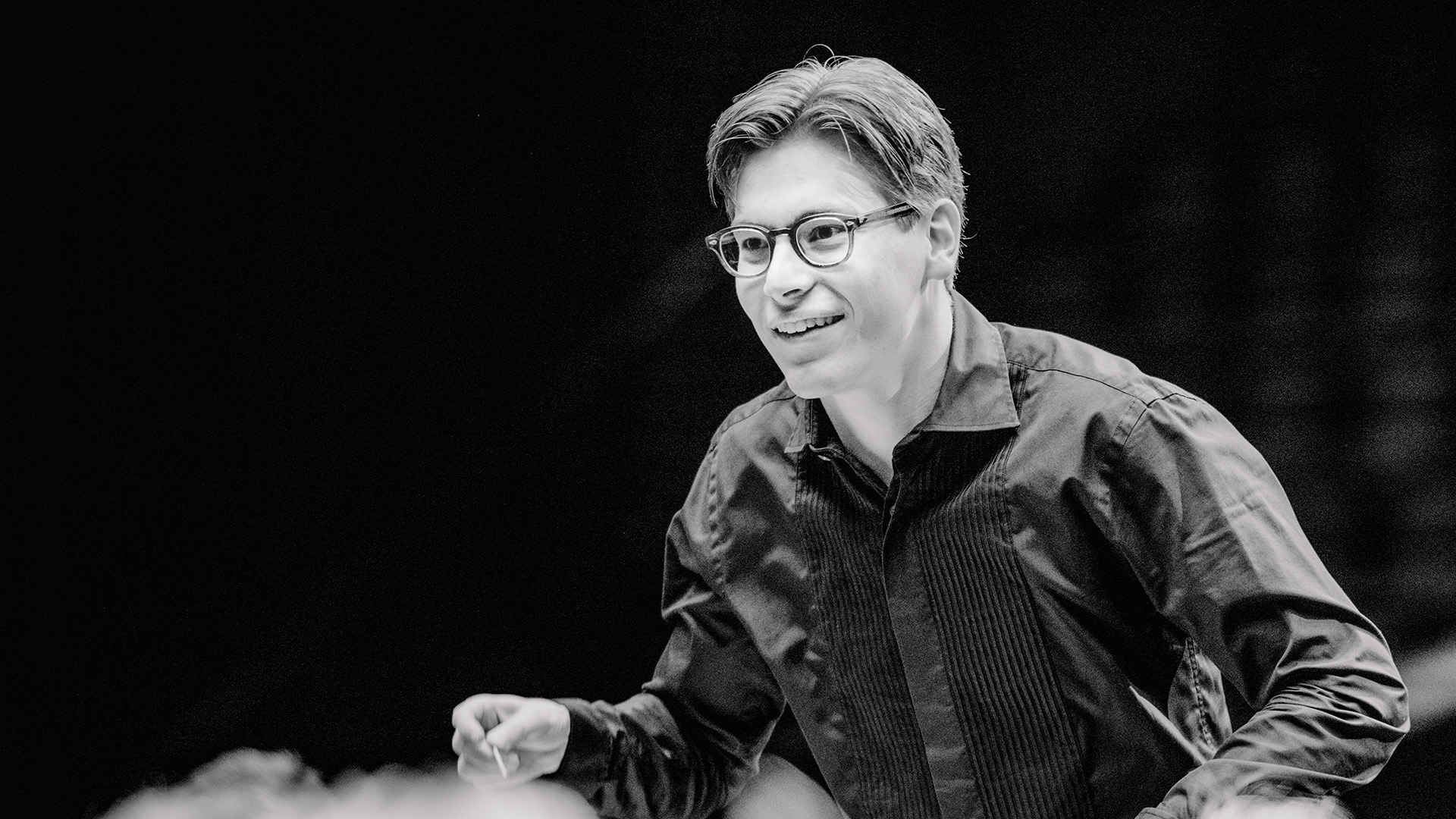The autumn season culminates in a programme led by conductor Klaus Mäkelä. The orchestra plays the lead role in as the star brightening up the December evening.
“Great respect and thanks to Professor Kajanus and the Philharmonic Orchestra for taking on Mahler's Symphony No. 1 and the mainly praiseworthy performance.” The Helsinki Philharmonic Orchestra performed the Finnish premiere of Gustav Mahler's First Symphony under conductor Robert Kajanus in November 1911, 110 years ago. Karl Fredrik Wasenius, a music critic who wrote under the pseudonym “Bis”, devoted plenty of column space to praise both the composer and the work, as well as the performance. “Where could we find in our days a counterpart to this symphony, whose music indicates maturity and grandeur!”
Klaus Mäkelä
Klaus Mäkelä is one of the today’s most talked-about conductors, and not only in his native Finland. Still only 25, he has already guest conducted such orchestras as the Munich Philharmonic, Tokyo Metropolitan, London Philharmonic and Cleveland. Principal Guest Conductor of the Swedish Radio Symphony Orchestra as of autumn 2018 and Artistic Advisor of the Oslo Philharmonic as of 2020, and he will become Music Director of the Orchestre de Paris in the autumn of 2022. He has also been a familiar face in the HPO’s cello section and claims that watching conductors at close quarters has been a most valuable experience along with his study in the celebrated conducting class of Jorma Panula.
Pierre Boulez: Initiale
As a young man, French composer Pierre Boulez (1925–2016) caused quite a stir in musical circles, eager to sweep away the whole Western classical music tradition. He was also a provocateur (for example, he once said all opera houses should be blown up), but like many Angry Young Men, he later calmed down. In 1972, he founded the legendary Ensemble Intercontemporain and made an international career as a conductor. He often wrote several versions of a work, sometimes with even decades in between. Or he would recycle material to produce a completely new work. Initiale for brass septet was a commission from the Houston Symphony Orchestra in 1987 and was premiered that year in Texas. A new version followed in 2010. Initiale for brass and percussion is in principle the same as the Fanfare composed for the 80th birthday of conductor Georg Solti in 1992 and is a short, virtuoso fanfare.
Sauli Zinovjev: Wiegenlied
Sauli Zinovjev (b. 1988) wrote Wiegenlied in 2020 as a joint commission from the Oslo Philharmonic, Gothenburg Symphony and Helsinki Philharmonic Orchestra. It is dedicated to tonight’s conductor, Klaus Mäkelä, who conducted the Oslo Philharmonic in the premiere in August 2020. Today’s is its first performance in Finland. The title Wiegenlied alludes to the famous Op. 49:4 lullaby of 1868 by Johannes Brahms, which is heard as such towards the end. Zinovjev describes his piece as a musical journey towards a melodic and soothing climax, and he would be immensely pleased if, after hearing it, the audience felt hopeful and comforted.
The piano concerto composed by Finland’s Sauli Zinovjev in 2019 is to be premiered at the Helsinki Music Centre in January 2022. He has also composed chamber, orchestral and vocal music.
Gustav Mahler: Symphony No. 1 in D, “The Titan”
The first symphony by Austrian composer Gustav Mahler (1860–1911) was named The Titan – an allusion to the novel by the German writer Jean Paul. Highly respected as a conductor, Mahler tended to be derided as a composer until after WWII. He liked mixing contrasting elements, and the listener may, in the Symphony in D, catch echoes of Beethoven and Schubert coupled with pointers to both Late Romanticism and 20th-century Modernism. It also has folk-like melodies lifted from his song cycle Lieder eines fahrenden Gesellen, and all in all is a work of youthful optimism with a pantheistic feel for Nature. Birds chirrup in the first movement as Nature awakens in spring, and the second movement is like a jolly folk dance with an idyllic middle section. The theme of the funeral-march third is a minor-key take on the well-known Frère Jacques and is usually a double-bass solo; it is said to have been inspired by a cartoon by Moritz von Schwind showing the beasts of the forest bearing the body of a dead hunter to his grave. Rounding off the symphony is a stormy finale.

